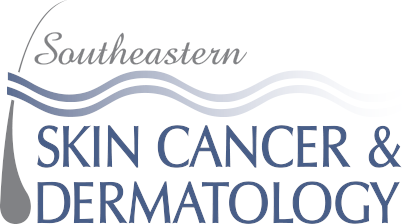Sun Damage/Sun Spots
Home » Dermatology » Sun Damage/Sun Spots
The sun has a profound effect on the skin,
causing premature skin aging, skin cancer, and many other skin changes. Exposure to ultraviolet (UV) light from the sun accounts for most premature skin aging. Many skin changes that were commonly believed to be due to aging, such as easy bruising, are actually a result of prolonged exposure to the sun.
Skin texture changes caused by UV exposure
(eg, from sunbathing, tanning) include thick skin, coarse wrinkles, thinning of the skin causing fine wrinkles, easy bruising, and skin tearing, particularly on the forearms and back of the hands. Blood vessel changes lead to bruising with only minor trauma in sun-exposed areas. The sun also causes the appearance of tiny blood vessels (telangiectasias) in the skin, especially on the face.
Skin color changes caused by sun exposure are common. The most noticeable sun-induced pigment changes are brown spots (solar lentigenes). Light-skinned people are particularly prone to pigment changes. Large pigment changes, also known as “age spots” or “liver spots”, can be seen on the backs of the hands, chest, shoulders, arms, and upper back. UV exposure can also cause small white spots on the legs, backs of the hands, and arms (guttate hypomelanosis) as well as red areas on the sides of the neck (poikiloderma of Civatte).
Moles (nevi) are usually seen in sun-exposed areas. Although it is normal to acquire new moles from childhood through young adulthood, their formation is stimulated by the sun. Most moles are normal. Atypical moles, which are seen in non-sun-exposed areas and are larger and more irregular than normal moles, serve as an indicator that the person may be prone to developing melanoma, a type of skin cancer.
Pre-cancerous skin changes include red, scaly lesions (especially on the face, ears, and backs of the hands) called actinic keratoses. When on the lip (usually the lower lip), it is called actinic cheilitis. Actinic keratoses are considered premalignant lesions because some will develop into squamous cell carcinoma, another type of skin cancer.
A person can not undo the amount of ultraviolet exposure that they have received but there are options to slightly reverse some of the damage. The primary focus is to treat any changes that are present and then focus on prevention of future concerning lesions.
At Southeastern Skin Cancer & Dermatology we can address all of these conditions and more. For wrinkles with movement (dynamic rhytides) we can tailor a Botox treatment for your specific concerns and anatomy. We have the Epionce, SkinCeuticals, Obagi, Skin Medica, Theraplex and other skin care lines to assist in prevention and correction of these effects. We have chosen the best and most cost effective options to allow you a choice in building the optimal regimen to achieve results for you. Also, utilize the Cyanosure Icon laser system to completely rid you of the bothersome changes in your skin – primarly the reds and browns that are most commonly seen (it also treats scars, wrinkles, and stretch marks!).





